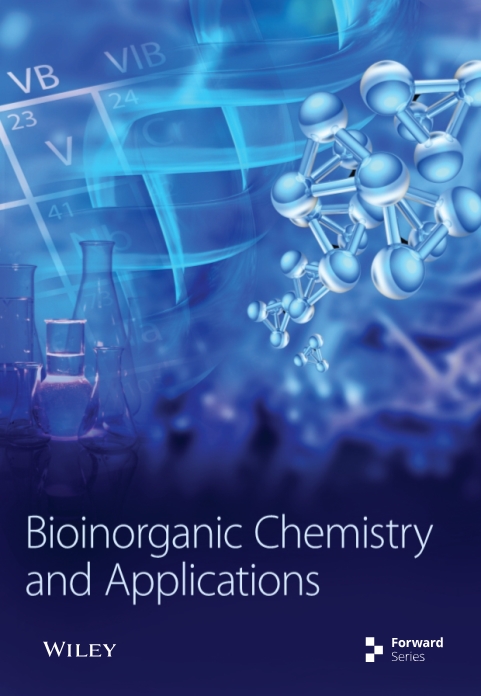绿色合成含芳香疗法的纳米银纳米粒抗氧化和抗菌活性研究
IF 4.7
3区 化学
Q1 BIOCHEMISTRY & MOLECULAR BIOLOGY
引用次数: 22
摘要
有必要合成具有更有效和更强抗菌活性的环保纳米颗粒。研究了以麝香草、薄荷和生姜提取物为原料合成纳米银粒子的绿色经济方法。利用紫外/可见光谱、吸收光谱、红外光谱和扫描电镜等分析仪器对制备的AgNPs进行了测定,确定了参与还原的官能团。酸性钼酸盐、DPPH和FRAP试剂与AgNPs提取物反应,以评估其抗氧化、清除和氧化活性。采用琼脂孔扩散法测定临床分离株AgNPs提取物的抑菌潜力。在25、50、75 μ m / Diff处,胸腺、薄荷和姜汁的AgNPs峰值分别为16.59±0.78、45.94±1.07和81.04±0.98 nm。扫描电镜显示,以植物提取物为基质制备并包封的AgNPs均匀。FTIR表明酰胺(-CO- nh2)、羰基(-CO)和羟基(-OH)参与了AgNPs的还原。AgNPs提取物的TAA、DPPH和FRAP值显著高于游离AgNPs和植物提取物(p < 0.05)。AgNPs提取物对大肠杆菌、鲍曼不动杆菌和金黄色葡萄球菌均有不同程度的抑菌作用。制备的AgNPs提取物具有良好的抗氧化活性和显著的抗菌潜力。所制备的绿色合成AgNPs对大肠埃希菌、鲍曼不动杆菌和金黄色葡萄球菌4种多重耐药临床分离株具有良好的抗菌活性。此外,在制备AgNPs的过程中,还将采用除粗提取物外的分馏提取物,以获得更有效的抗菌活性,为今后的工作奠定基础。本文章由计算机程序翻译,如有差异,请以英文原文为准。
Green Synthesis of Silver Nanoparticles Incorporated Aromatherapies Utilized for Their Antioxidant and Antimicrobial Activities against Some Clinical Bacterial Isolates
There is a need to synthesize eco-friendly nanoparticles with more effective and potent antibacterial activities. A green and cost-effective method for the synthesis of silver nanoparticles (AgNPs) using Thymus vulgaris, Mentha piperita, and Zingiber officinale extracts was developed. The analytical instrumentation, namely, UV/Vis, absorption spectroscopy, FTIR, and scanning electron microscopy (SEM), was used to determine the developed AgNPs, confirming the functional groups involved in their reduction. Acidic molybdate, DPPH, and FRAP regents were reacted with AgNPs extract to evaluate their antioxidant, scavenging, and oxidative activities. The agar well diffusion method was used to determine the antibacterial potential of AgNPs extracts using clinical isolates. The developed AgNPs showed peaks at 25 cum\Diff, 50 cum\Diff, and 75 cum\Diff, respectively, of 16.59 ± 0.78, 45.94 ± 1.07, and 81.04 ± 0.98 nm, for Thymus vulgaris, Mentha piperita, and Zingiber officinale. SEM revealed uniform prepared and encapsulated AgNPs by plant extracts matrix. The FTIR shows the involvement of amide (-CO-NH2), carbonyl (-CO), and hydroxyl (-OH), which resulted in the reduction of AgNPs. The AgNPs extract showed significantly higher TAA, DPPH, and FRAP values than free AgNPs and plant extract (p < 0.05). Antibacterial of AgNPs extracts revealed various degrees of inhibition zones against Escherichia coli, Acinetobacter baumannii, and Staphylococcus aureus. The developed AgNPs extract showed acceptable antioxidant activities and noticeable antibacterial potential. The prepared green synthesized AgNPs showed a promising antibacterial activity against four multidrug-resistant clinical isolates, Escherichia coli, Acinetobacter baumannii, and Staphylococcus aureus. Further, fractionated extracts other than crude extracts will be utilized in the preparation of AgNPs to get more efficient antibacterial activities for future work.
求助全文
通过发布文献求助,成功后即可免费获取论文全文。
去求助
来源期刊

Bioinorganic Chemistry and Applications
化学-生化与分子生物学
CiteScore
7.00
自引率
5.30%
发文量
105
审稿时长
>12 weeks
期刊介绍:
Bioinorganic Chemistry and Applications is primarily devoted to original research papers, but also publishes review articles, editorials, and letter to the editor in the general field of bioinorganic chemistry and its applications. Its scope includes all aspects of bioinorganic chemistry, including bioorganometallic chemistry and applied bioinorganic chemistry. The journal welcomes papers relating to metalloenzymes and model compounds, metal-based drugs, biomaterials, biocatalysis and bioelectronics, metals in biology and medicine, metals toxicology and metals in the environment, metal interactions with biomolecules and spectroscopic applications.
 求助内容:
求助内容: 应助结果提醒方式:
应助结果提醒方式:


